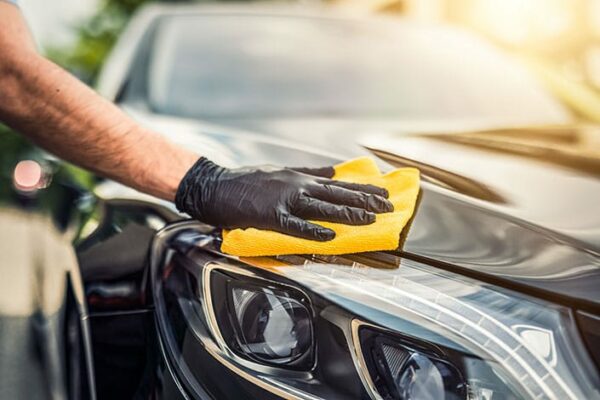Auto detailing involves the thorough cleaning and restoration of a vehicle to its original condition. The process includes cleaning, polishing, and protecting both the interior and exterior of the vehicle. Auto detailing is not just about making a car look good, but it also helps in preserving the longevity of the vehicle and maintaining its value.
Basics of Auto Detailing

The first step in auto detailing is to thoroughly wash the exterior of the vehicle. This involves using a high-quality car shampoo and a microfiber towel to clean the surface of the car. It is important to use a separate towel for the wheels and tires as they can contain dirt and debris that can scratch the paint of the car.
The next step is to clay bar the car’s surface. Clay bars help in removing any contaminants that are stuck on the surface of the car, such as tree sap, bird droppings, and tar. After claying the car, it is important to rinse it thoroughly with water to remove any remaining residue.
The final step in the exterior detailing process is to apply a protective coating to the car’s paint. This can be in the form of a wax or a sealant. Wax provides a glossy finish and protects the paint from the elements, whereas a sealant provides longer-lasting protection.
Interior detailing involves cleaning the seats, carpets, and dashboard of the car. The first step is to vacuum the interior of the car to remove any dust and debris. The seats and carpets should be shampooed to remove any stains or odors. The dashboard and other plastic surfaces should be cleaned with a microfiber towel and a mild detergent.
Professional Tips for Auto Detailing

- Use high-quality products: Professional auto detailers use high-quality products that are specifically designed for auto detailing. Using the right products can make a significant difference in the final outcome.
- Pay attention to detail: Auto detailing is all about attention to detail. Make sure to clean every nook and cranny of the car, including the door jambs and the engine bay.
- Use the right tools: Using the right tools can make the detailing process much easier and more efficient. Invest in a good quality vacuum, microfiber towels, and brushes.
- Protect the car from the elements: After detailing the car, it is important to protect it from the elements. This includes parking the car in a shaded area and using a car cover.
In conclusion, auto detailing is an art that requires attention to detail and the right tools and products. Whether you are a DIY enthusiast or a professional detailer, following the basics and incorporating professional tips can help you achieve excellent results and maintain the value of your vehicle.


Comments are closed.